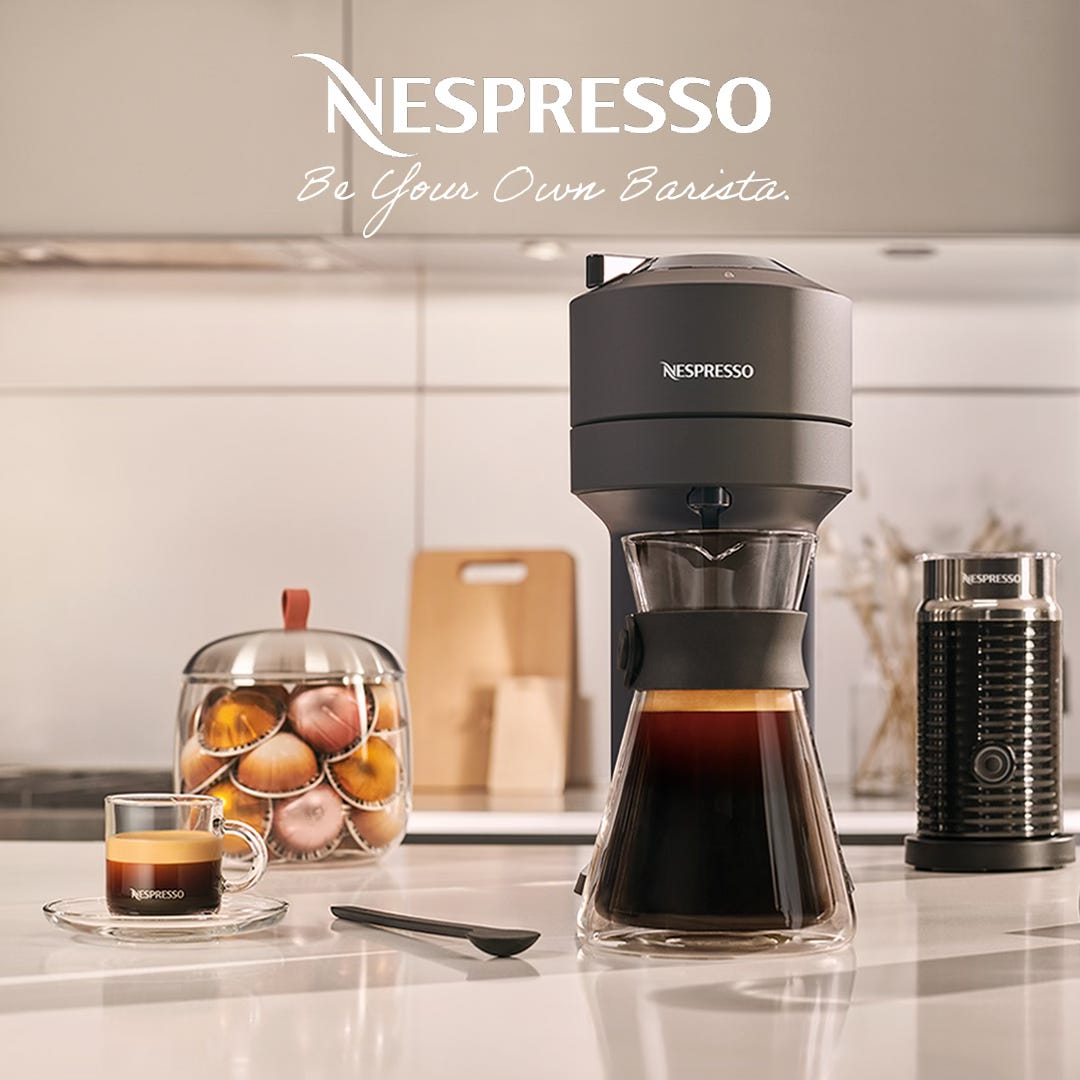How Nespresso Revolutionized Marketing: A Lesson in Creating Continuous Demand
Nespresso transformed coffee sales by creating machines that only work with their capsules, ensuring long-term customer loyalty. A brilliant example of marketing innovation.
When it comes to innovative marketing strategies, Nespresso stands out as a prime example of turning a product that was struggling to sell into a globally recognized luxury brand. Their journey is a testament to the power of creative thinking, the importance of long-term customer retention, and how solving the right problem can create a perpetual sales cycle.
Let’s rewind to the early days. Nespresso initially faced a significant challenge: their coffee capsules weren’t selling. Despite their quality, the product simply didn’t resonate with consumers. Why? Because the capsules alone weren’t solving a problem. They were a piece of a puzzle, not a standalone solution.
The Brilliant Shift: From Selling Capsules to Creating an Ecosystem
Here’s where the marketing magic happened. Instead of doubling down on capsule marketing or slashing prices to push sales, Nespresso asked a bold question: What if we sold a machine that only works with our capsules?
This was more than just a product pivot—it was a strategic masterstroke. By designing a sleek, easy-to-use coffee machine that exclusively used Nespresso capsules, they didn’t just sell coffee. They sold convenience, luxury, and an experience. The machine became the gateway to the product they originally struggled to sell.
Now, why was this so brilliant from a marketing perspective?
Creating a Locked-In Ecosystem
Nespresso didn’t just sell a coffee machine; they created an ecosystem where the machine’s functionality depended entirely on their capsules. Consumers who bought the machine became Nespresso customers for the long haul. This strategy not only increased capsule sales but also locked in repeat business. It’s the same principle that makes razor companies sell razors at a low cost while profiting from blades.Elevating the Brand Through Experience
Nespresso machines weren’t positioned as regular coffee makers. They were marketed as a premium product. The design, the advertising, and even the boutiques where Nespresso capsules were sold screamed exclusivity and luxury. This redefined what the brand stood for: it wasn’t just coffee; it was an experience. The capsules now became symbols of indulgence, not mere commodities.Transforming Customers Into Subscribers
What Nespresso effectively did was shift their business model. They moved away from being a product company to becoming a subscription-like service, even if it wasn’t formally structured that way. The coffee machine purchase was just the start of a relationship. Every time customers bought capsules, they were engaging with the brand again—and that’s what every marketer dreams of: continuous engagement.
Marketing Takeaway: Sales Is More Than Just Selling
The genius behind Nespresso’s story lies in its understanding of what “sales” really means. It’s not just about pushing a product off a shelf—it’s about creating a system where customers keep coming back. Here are some key lessons from Nespresso’s success:
Solve the Right Problem
Before Nespresso introduced its machine, the capsules were a solution to a problem most consumers didn’t think they had. The machine reframed the problem: people didn’t just want coffee—they wanted barista-quality coffee at home. By understanding the true need, Nespresso positioned itself as the solution.Think Beyond the First Sale
Many brands focus only on the initial purchase. Nespresso understood that the real opportunity was in the long-term. By creating a product that required regular replenishment, they guaranteed continuous revenue. This thinking is applicable across industries: don’t just sell a product—build a system.Design an Experience, Not Just a Product
The exclusivity of Nespresso’s boutiques, the elegance of their machines, and the aspirational tone of their marketing campaigns were all carefully designed to make their customers feel like they were part of something special. They didn’t sell coffee; they sold status, sophistication, and self-indulgence.Innovation Fuels Retention
Nespresso didn’t stop with one machine or one line of capsules. Over the years, they’ve expanded their offerings, creating more machines, more capsule varieties, and even introducing sustainable options. This constant innovation kept the brand fresh and ensured that existing customers stayed loyal.
The Broader Lesson for Marketers
Nespresso’s story is a perfect example of how marketing isn’t just about finding customers—it’s about creating systems that keep them coming back. Every business should ask itself: How can I create a cycle of continuous engagement? How can I sell not just a product, but an experience?
In the end, it’s not just about the coffee or the capsules. It’s about thinking beyond the obvious and creating a framework where your customers choose you—not just once, but over and over again. And that is where the true magic of marketing lies.
Closing Thought: Selling Is About Building Relationships
Nespresso’s strategy wasn’t just about selling coffee; it was about crafting a relationship between the customer and the brand. That’s a lesson we can all take to heart. Because whether you’re selling coffee, technology, or a service, the key is to think beyond the transaction and create a connection that keeps people coming back.
And that’s how you turn a struggling product into a global phenomenon.





